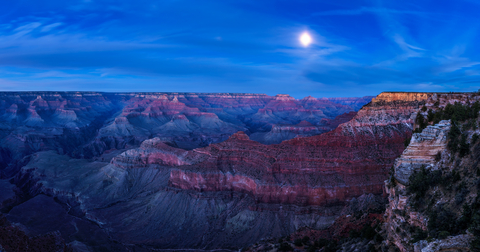Stargazing consists of gazing and identifying stars and it is done all around the world. But, you need a dark sky to see stars and there is a group interested in dark skies. However, children through adults have interest and passion for stargazing.
The International DarkSky Places Program (founded in 2001) was a non-regulatory and voluntary program. Accordingly, these voluntary groups were:
- Communities
- parks
- management of already protected areas.
In addition, their goals were to:
- preserve and protect dark sites for stargazing through effective lighting policies
- have environmentally responsible outdoor lighting policies in existence (Stars Up, Lights Down)
- Available Public Education
Therefore, an International DarkSky Association exists. Their Mission is also the same as the Program above. (Note: All foreign locales used foreign language spellings, not based on English.)
DarkSky Places for Stargazing
Indeed, there were 22 countries on 6 continents listed! There were over 30 locations in their list. Consequently, only 1 had lodging and 45 were communities. Furthermore, there are 119 parks and 21 reserves. In addition, 18 sanctuaries and 1 Urban Night Sky Place are in the program. As a result, some utilized telescopes to see stars from the160,000 sq. km. of protected lands and night skies. The following sites piqued my interest and I added Remi Boucher, A DarkSky Advocate from Canada in our “trip around the world.” Enjoy!
South Africa: !Ae! Hai Kalahari Heritage Park
Moreover, there are six farms of 35,000 ha., south of Kgalagadi Transfrontier Park. A joint management Board preserves the cultural/traditional knowledge of Khomani San and Mier communities. Certainly, the DarkSky Sanctuary improves their economy and opportunities for stargazer visitors.
Japan: Yaeyama Islands, Okinawa Prefecture
Subsequently, water surrounds the Yaeyama Islands at the Iriomote-Ishigaki National Park, Okinawa Prefecture, Japan. 270 km east of Taiwan are the Yaeyama Islands in the East China Sea, which is home to the only rainforest in Japan. In addition, it is a refuge for plants, animals and living coral. As a result, great effort of governments, civic organizations and interested citizens enhance tourists’ activities. Therefore, they use preservation and protection guidelines. Hence, they provide that dark skies opportunities will continue into the future.
Spain: Albanya, Alt Emporda Girona, Cetalonia
Conversely, this municipality is a rural setting surrounded by lands that contain the headwaters of the La Muga River located in extreme Northeastern Spain. Astro-tourism consists of stargazing and nighttime interpretive programs which are offered at Bassegoda Park. Other opportunities for self-directed stargazing are available. July 2017 saw the park offer a new 40 cm. telescope dedicated to public education and outreach. Astronomical twilight and new moon views are available.
Scotland: Glenlivet Estate of Crown Estate, Scottish Highlands
This Estate in Scottish Highlands is within the Cairngorms National Park. Additional lands, both private and other, form Tomintoul and Glenlivet-Cairngorms International DarkSky Park. (Moray Council District.) The Park includes:
- protected dramatic landscape
- upland plateaus
- rare species, including reindeer and the trees of the Caledonian Forest (an ancient Temperate rain forest)
- (eponymous) Scotch whiskey production
- remarkable dark skies
Israel: Ramon Crater for Stargazing
Between Egypt and Jordan, one finds Israel’s Ramon Crater. It is a nature reserve of 1,100 sq. km. in the Negev Desert of southern Israel. This is an example of a makhtesh, a form unique to this area. Settlers avoid the harsh climate and forbidding landscape. But, stargazers are drawn to the darker nights (with no lights), usually good weather and its dry climate. In addition, management offers interpretive programs and opportunities for local communities to help and pursue stargazing.
Canada: Waterton Lakes National Park AND Montana: Glacier National Park
Above all, continue your journey to the unusual duo of parks: the Waterton Lakes National Park in Alberta, Canada and the Glacier National Park in Montana, U. S., both spanning the international border. They are located in the Western Cordillera of North America. In addition, they each hold the distinction of being the world’s first International Peace Park. Moreover, very dark skies, relative isolation and rugged mountain terrain gives a home to rare species and ecologies. Indeed, dark skies is a current conservation priority within these two parks for the stargazers.
Brazil: Rio de Janerio, Desengano State Park
Meanwhile, this is the first park created by Rio de Janerio government. It consists of seasonal semi-deciduous forest, thick ombrophilous forest, and high mountain grasslands. Notwithstanding, there are 1,321 species living there, of which 58 are endangered. In addition, 81 of the species only live in the Park locale. Deep silence follows visitors on trails, waterfalls, climbs, birdwatching, adventure tourism, horseback riding and stargazing. The Milky Way is visible and full of light and color. There is a TOTAL absence of artificial light!
Best location for motorized vehicles is here. It is great for visitors who use the “Astronomical Program (by Inea). Another program is the “Outdoor Planetarium” held in an open amphitheater. Also, education opportunities exist for visitors. It is open 24 hours daily! Santa Maria Madalena, RJ, 28770-000, Brazil
Canada: DarkSky Advocate for Stargazing
Remi Boucher is the DarkSky Advocate at Mont-Megantic, Canada. Their catch line is: “From Earth to the stars on Mont-Megantic,” and the world’s FIRST International DarkSky Reserve. Remi is always busy:
- presenter and spokesman
- committee member
- information guru with educational and scientific outreach
- Webmaster of 10 years
- astrophotography
Enjoy his astrophotography of this magnificent treasure at remiboucherphoto.com
Thanks to all the passionate volunteers within the “Stargazing World.” Resources for this blog include DarkSky Place Finder and https://darksky.org. Also, to remiboucherphoto.com for sharing his video, thanks!
Update–The National Park Service and DarkSky International announces Saguaro Nationa Park, AR Certification on Nov. 13, 2023 as the Newest Urban Night Sky Place.
Contact Us regarding our Community Information System. See what we are. Click Here.


